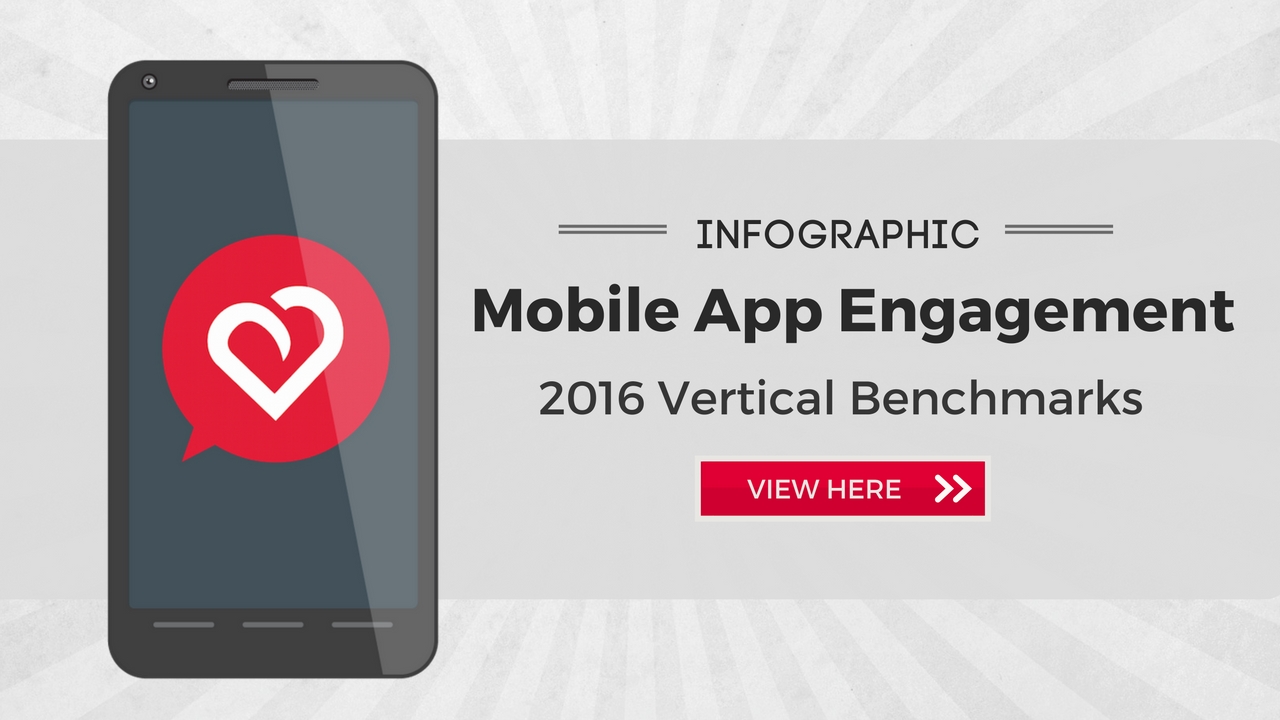This post comes to the App Developers Alliance community from Robi Ganguly, CEO of Apptentive, and one of the Alliance’s board members.
Engaged customers are the key ingredient to a successful mobile app. Not only are engaged customers likely to drive referrals and give your app love in the app stores, they’re likely to be more loyal and more profitable over time. Measuring and tracking the engagement of your mobile customers is far more telling about the health of your app than many metrics app publishers currently look at, like open rates or downloads.
However, there is no standard formula for measuring engagement. Engagement can only be defined within the context of the goal of your app and its mobile marketing strategy. To help app publishers measure their app’s success, Apptentive recently created a Mobile App Engagement Benchmark Report. The report concentrates on benchmarks for response rates to in-app surveys; the average volume of ratings and reviews; the distribution of star ratings; the opportunity cost of a star; the average number of in-app messages sent by customers to brands (and vice versa); the percentage of app customers who companies interact with; and the percentage of customers who engage with the interactions sent to them.
In this post, I share several metrics that contribute to mobile customer engagement, and include an infographic detailing benchmark metrics for specific app verticals from both Android and iOS apps, including Productivity, Food & Drink, Shopping, Entertainment, and Lifestyle categories.
Measuring In-app Engagement
What if hundreds of thousands of consumers download your app, but never came back after a week? What if customers open your app every day, but are never engaged and end up leaving? On paper, these metrics make it seem as though everything is going well for your app; however, upon a deeper look, it’s obvious something is amiss.
Mobile customer engagement is an umbrella term for many actions within the app. While engagement itself isn’t a metric, there are tangible metrics that fall under the engagement umbrella to help you understand which customers are engaged and at what level. The goals of your app ultimately determine how engagement is best defined, but to understand your app’s engagement level, start by tracking a combination of these metrics:
- Session length: How much time does a customer typically spend in your app in a single session?
- Session interval: How frequently do customers launch your app?
- App screens per session: How many parts of your app (screens) does a customer launch in a single session?
- Conversion rates for events: What percent of customers complete x action within the app?
- Interactions: What percent of customers are messaged to and prompted? What percent of customers respond to a message or prompt?
- Opt-ins: How many customers sign up for additional alerts or notifications?
- Opt-outs: How many customers request fewer alerts or notifications?
- Ratings and reviews: How many customers leave a rating and/or review in the app stores for your app? What’s the distribution percentage of your star ratings?
With the metrics listed above, paired with mobile analytics programs such as Google Analytics, engaged customers can be segmented and tracked over time to uncover trends and actionable insights into your customers’ behavior. Ask yourself: How does engagement change over time? What actions lead to higher engagement? How long do customers stay engaged? Uncovering the answers to these questions will help you understand what actions need to be taken to increase customer engagement, and ultimately, customer satisfaction.
App Vertical Specific Benchmark Metrics
To give you an idea of how your app is doing compared to other apps in your category, the infographic below includes data specific to individual mobile app verticals. Using data from around 200 of Apptentive’s customers’ mobile apps, the benchmarks laid out in this infographic serve as new way for companies to understand how their apps’ engagement stacks up against the competition.
For brevity, we’ll focus on the top five app categories that had the highest number of apps. Data included is from both Android and iOS apps in the Productivity, Food & Drink, Shopping, Entertainment, and Lifestyle categories from April 2015 to April 2016. The data in this report was captured by interactions deployed using Apptentive’s software.
Boosting engagement will make your app stickier, drive consumers to spend more money with your company, and become more loyal over time. Metrics that many app publishers consider a barometer of success, such as open rates or downloads, are still important, but they only offer a glimpse into the start of customers’ mobile journeys. Your app’s engagement level is a surefire way to assess the overall health of your app.





